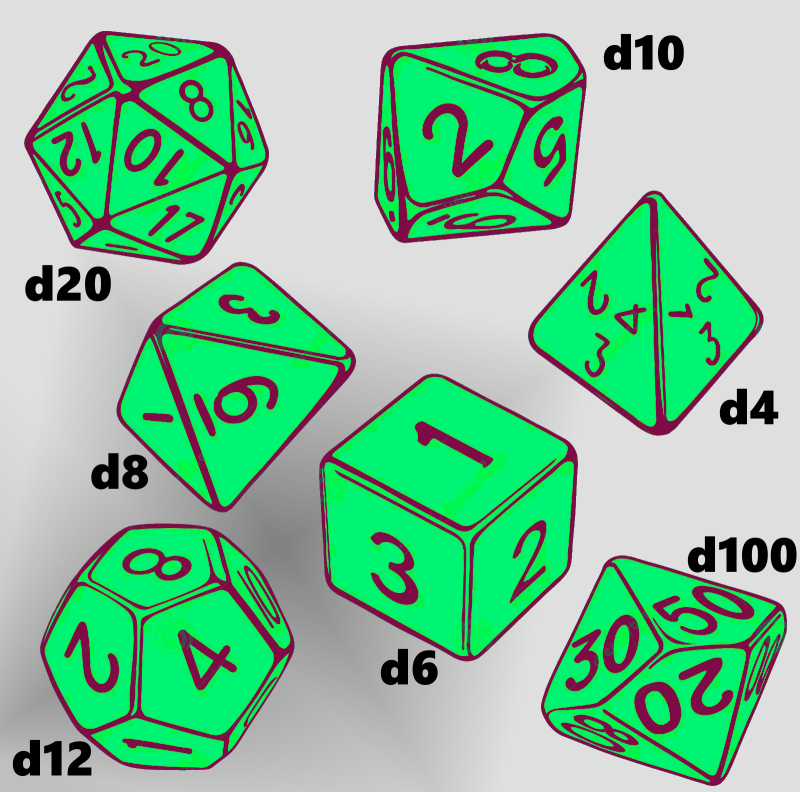Enchanted Realms Rulebook
Dice

If one is reading this manual is sequential order, the explanation of character creation is being placed on pause for a moment. As the next part to complete the character is about picking skills based upon one's backstory, upbringing and education (Paideia). However, to best understand what those skills mean and how they perform, the basics of the game mechanics should be explained first. Thus, this part of the book will address the basics.
To determine the result or the timing of something, a statistical formula is used. The mechanic to resolve those odds is with dice. All the standard “dragon dice” are used in Enchanted Realms. However, since the user interface is digital, non-physical dice can be rolled as well, which is helpful when using discreet math. For example, if a rule requires to roll a d6 but re-roll if the raw score is a 1. The write a macro to do this sounds really complicated, until one realizes that this is the same thing as rolling d5+1. There are no loops or recursive functions to write. Just straight up discreet math to solve the problem.
Let’s consider the different cases when one would need the different dice. In that vein, the answer between the difference in terms for “save,” “check,” and “competition” needs to be understood as well.
At the highest view, dice are rolled against a Target Mark, typically just called merely “TM,” to determine if something is successful. However, in this system, the absolute win-or-lose result is not the goal. Admittedly, there are times when that's the only interpretation, but in most cases, the rolls determine the degree of success or possibly the amount of time before success can be made.
The way this is done is a task needs to be accomplished, picking a lock for example. The lock has a TM of 15. Dice are then rolled to check those rolled values to the TM. There will be adjustments to the total score of the dice for a sundry of reasons. These include attribute modifiers, magical bonuses, perhaps the quality of the tools used, and so on. If the adjusted score of the dice meets the TM, then the lock is opened.
Remember, however, that win-or-lose is not the default. So, what do we do that is other than having the lock open? Instead of success, the score against the TM could mean it required the standard amount of time to pick the lock, which is about 12 seconds. Thus, a score of 14 could indicate after the standard time it was not opened but it would be opened after another duration of standard time. On the other extreme of the short side of the TM, the required time might be a couple of days.
The trick in this method is the player cannot know the TM or cannot know the result of the roll -- or perhaps both. But by using the API of Roll20, the player can enact the roll and the calculated result using the method above can be sent the GM. Then the answer at the end of the round (if a combat were happening while trying to pick that lock), the GM would say “The lock hasn't opened yet, are you planning to continue attempt in the next round?” Of course, if time wasn't that critical, the 14 would likely be described as “It was a little tougher than expected but you got it open.” But with a 8 roll or so, the GM would respond, “You've worked on it for about a minute and it won't budge. How much longer do you want to keep trying? and what are the rest of you doing in the meantime?”